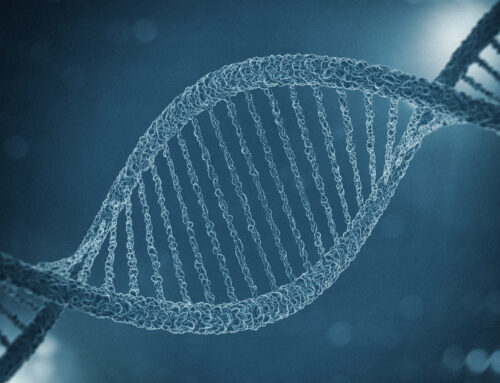There has always been the need for humans to connect with one another. Way before the term “social networking” was invented genealogists were trying to increase their knowledge of their family history through historical society files and newsletters circulated via postal mail. With the advent of the Internet online mailing lists, message boards and family tree databases have become popular. Many individuals are now prepared to go a step further in their search for their ethnic mix, distant relatives and new ancestors through the use of direct to consumer genetic ancestry testing. As with all self-initiated genetic testing, buyer beware. Be sure to research thoroughly before participating and if you have any questions, contact your healthcare provider or a genetic counselor. You can find a counselor in your area at www.nsgc.org
According to the Genetics Home Reference (https://ghr.nlm.nih.gov) “genetic ancestry testing or genetic genealogy is a way for people interested in family history (genealogy) to go beyond what they can learn from relatives or historical documentation. Examination of DNA variations can provide clues about where a person’s ancestors might come from and about relationships between families. Certain patterns of genetic variations are often shared among people of particular backgrounds. The more closely related two individuals, families or populations are the more patterns of variation they typically share.”[1]
Three types of genetic ancestry testing are commonly used for genealogy:
- Y chromosome testing: Variations in the Y chromosome, passed exclusively from father to son, can be used to explore ancestry in the direct male line. Y chromosome testing can only be done on males, because females do not have a Y chromosome. Because the Y chromosome is passed on in the same pattern as are family names in many cultures, Y chromosome testing is often used to investigate questions such as whether two families with the same surname are related.
- Mitochondrial DNA testing: This type of testing identifies genetic variations in mitochondrial DNA. Although most DNA is packaged in chromosomes within the cell nucleus, cell structures called mitochondria also have a small amount of their own DNA (known as mitochondrial DNA). Both males and females have mitochondrial DNA, which is passed on from their mothers, so this type of testing can be used by either sex. It provides information about the direct female ancestral line. Mitochondrial DNA testing can be useful for genealogy because it preserves information about female ancestors that may be lost from the historical record because of the way surnames are often passed down.
- Single nucleotide polymorphism (https://ghr.nlm.nih.gov/primer/genomicresearch/snp) testing: These tests evaluate large numbers of variations (single nucleotide polymorphisms or SNPs) across a person’s entire genome. The results are compared with those of others who have taken the tests to provide an estimate of a person’s ethnic background. For example, the pattern of SNPs might indicate that a person’s ancestry is approximately 50 percent African, 25 percent European, 20 percent Asian, and 5 percent unknown. Genealogists use this type of test because Y chromosome and mitochondrial DNA test results, which represent only single ancestral lines, do not capture the overall ethnic background of an individual.[2]
Genetic ancestry testing has a number of limitations. Test providers compare individuals’ test results to different databases of previous tests, so ethnicity estimates may not be consistent from one provider to another. Also, because most human populations have migrated many times throughout their history and mixed with nearby groups, ethnicity estimates based on genetic testing may differ from an individual’s expectations. In ethnic groups with a smaller range of variation due to the group’s size and history, most members may share many SNPs and it may be difficult to distinguish people who have a relatively recent common ancestor. The impact of ancestry testing on people, families, communities and societies could bring to the fore a wide range of psychosocial, ethical, legal, political and health related issues that need to be addressed. For more information, visit The Legal Genealogist at www.legalgenealogist.com
Genetic ancestry testing is offered by several companies and organizations. Most companies provide online forums and other services to allow individuals who have been tested to share and discuss their results with others, which may allow them to discover previously unknown relationships. On a larger scale, combined genetic ancestry test results from many people can be used by scientists to explore the history of populations, their migrations patterns and how they intermingled with other groups.[3]
Additional information about genetic ancestry testing:
The University of Utah provides video tutorials (http://learn.genetics.utah.edu/content/basics/molgen/) on molecular genealogy.
The International Society of Genetic Genealogy (http://www.isogg.org/) promotes the use of DNA testing in genealogy.
The American Society of Human Genetics (ASHG) developed a position paper on ancestry testing (http://www.ashg.org/pdf/ASHGAncestryTestingStatement_FINAL.pdf).
Detailed information about genetic ancestry testing (http://archive.senseaboutscience.org/pages/genetic-ancestry-testing.html) is available from Sense About Science.
The Smithsonian National Museum of Natural History’s exhibit ‘Genome: Unlocking Life’s Code’ discusses genetic ancestry testing (http://unlockinglifescode.org/explore/our-genomic-journey/our-origins-and-ancestry).
The exhibit also discusses the African Diaspora (http://unlockinglifescode.org/explore/our-genomic-journey/feature-story-african-diaspora) and its influence on heredity and genealogy.
[1] Genetics Home Reference – https://ghr.nlm.nih./GeneticTesting , pg. 25
[2] Ibid., pg.25
[3] Ibid., pg. 26


